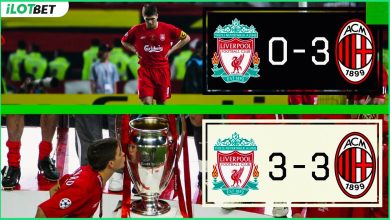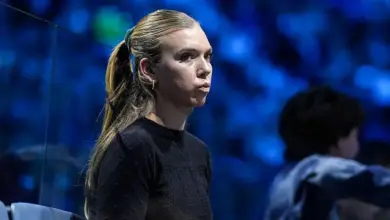´The Big One´: Djokovic set to reign supreme again in 2016

There was a time when men’s tennis was dominated by ‘The Big Four’.
Roger Federer, Rafael Nadal, Novak Djokovic and Andy Murray have won 43 grand slams between them. Of the last 43 slams, they have won 39.
They finished each year between 2008 and 2012 as the top four in the ATP rankings. Federer dropped to sixth in 2013 before his recent renaissance, and the after-effects of back surgery led to Murray ending 2014 in sixth place.
This year, Stan Wawrinka gatecrashed the party by ending the season in fourth, way adrift of Djokovic, Murray and Federer but one spot above Nadal.
Such statistics can offer the illusion that the ‘Big Four’ is still a thing; that the pinnacle of men’s tennis – while largely being a shop closed to all-but an elite quartet – is still competitive.
But it isn’t. ‘The Big Four’ has evolved into the ‘The Big One’.
Novak Djokovic now reigns supreme.
The Serb’s statistics for 2015 are overwhelming, dizzying, belief-defying.
An 82-6 win-loss ratio, including 27-1 in grand slams. A record six Masters 1000 titles. A fourth consecutive World Tour Finals triumph.
It is that ‘1’ in ’27-1′ that prevents Djokovic’s 2015 being, indisputably, the finest year in the modern history of men’s tennis. He was beaten by an inspired Wawrinka in the French Open final, a defeat that ultimately cost him the calendar Grand Slam.
Not since Rod Laver in 1969 has a male player won all four slams in the same year. Djokovic, having won the opening set in the Roland Garros final, was agonisingly – and remarkably – close to doing so.
Nevertheless, victories at Melbourne Park, Wimbledon and Flushing Meadows meant he ended the season with three slams to his name for the second time in five years.
Federer was vanquished in the finals of both Wimbledon and the US Open. The Swiss maestro has talked bullishly of his prospects for 2016, insisting he is “working hard” to catch Djokovic.
But Federer is 34 years old. His resurgence has been little short of astonishing, particularly after he was widely written off when he dropped as low as eighth in the world as recently as March last year.
Yet he has now gone three-and-a-half years without adding a slam to his 17-strong collection. No logical argument can be made for an ageing Federer, no matter how brilliant, to match and overcome the force of nature that is Djokovic, who does not turn 29 until May.
Age is no barrier for Murray, who finished 2015 second in the ATP rankings, to challenge.
But for all his admirable achievements, evidence suggests that the Briton can no longer be regarded as Djokovic’s equal. Since Murray’s victory in the 2013 Wimbledon final, the pair have met 11 times. Murray has won once.
And the fear factor surrounding 14-time slam champion Nadal has long gone.
Eight of the legendary Spaniard’s last nine matches with Djokovic have ended in defeat, and it was the Serb who demolished his air of invincibility at Roland Garros with a ruthless, crushing straight-sets quarter-final win this year.
Djokovic’s slam tally now stands at 10. He has won four of tennis’ last six blue-chip events. In 2014, he finished 1,600 points clear of Federer at the top of the rankings. This year, Murray was a mammoth 7,640 points adrift. The gap is widening, and ominously so.
He doesn’t have the balletic grace of peak-Federer, and he doesn’t have the primal, physical brutality of Nadal in his prime.
But this is a genuine, all-time great who, at the age of 28, has time on his side to make yet more history. If he continues in this vein, Federer’s 17-slam record is eminently beatable.
Novak Djokovic reigned supreme in 2015. It is difficult to imagine 2016 will be any different.






